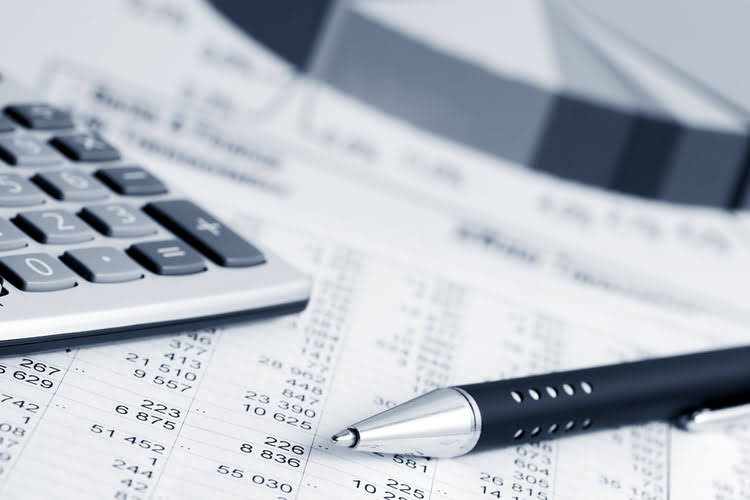
For information pertaining to the registration status of 11 Financial, please contact the state securities regulators for those states in which 11 Financial maintains a registration filing. It also highlights how this figure can play an important role in determining whether or not a company has enough capital to meet its financial https://www.bookstime.com/ obligations. Cash takes up a large portion of the balance sheet, but cash is actually not considered an asset because it is expected that cash will be spent soon after it comes into the business. This is often done by either borrowing money or issuing shares of stock, both of which can result in additional obligations.
Why You Can Trust Finance Strategists
- Though both methods yield the exact figure, the use of total assets and total liabilities is more illustrative of a company’s financial health.
- The stockholders’ equity, also known as shareholders’ equity, represents the residual amount that the business owners would receive after all the assets are liquidated and all the debts are paid.
- A shareholder’s acquisition of firm stock over time also results in capital gains for them and grants them the ability to vote in board of directors elections.
- You can calculate this by subtracting the total assets from the total liabilities.
- Below that, current liabilities ($61,000) are added to long-term liabilities ($420,000) in reaching a total liabilities number of $481,000.
- After accounting for debts and obligations, it represents the company’s net worth and ownership stake.
- In all of the examples we’ve discussed in this article, the basis of calculating that equity was rooted in this accounting equation.
Understanding stockholders’ equity and how it’s calculated can help you to make more informed decisions as an investor. While it’s not an absolute predictor of how a stock might perform, it can be a good indicator of how well a company is doing. Before making any investment, you’ll want to perform the proper analysis or find an advisor who can help you make those decisions. Positive shareholder equity means the company has enough assets to cover its liabilities.
Return on Equity
If a company’s shareholder equity remains negative, it is considered to be balance sheet insolvency. SE is a number that stock investors and analysts look at when they’re evaluating a company’s overall financial health. It helps them to judge the quality of the company’s financial ratios, providing them with the tools to make better investment decisions. In our modeling exercise, we’ll forecast the shareholders’ equity balance of a hypothetical company for fiscal years 2021 and 2022.

Balance Sheet Assumptions
In contrast, early-stage companies with a significant number of promising growth opportunities are far more likely to keep the cash (i.e. for reinvestments). But debt is also the riskiest source of funding for businesses because the latter must honor the agreement with creditors to pay interest on a regular basis regardless of the state of the economy. We can use this information to guide our own individual investment decisions while keeping in mind various debt and equity products. Although a lot of investment choices are based on the amount of risk we are willing to face, we cannot ignore all the important factors mentioned above.
- Shareholder equity alone is not a definitive indicator of a company’s financial health.
- Current assets are those that can be converted to cash within a year, such as accounts receivable and inventory.
- If you want to calculate the value of a company’s equity, you can find the information you need from its balance sheet.
- Shareholders, however, are concerned with both liabilities and equity accounts because stockholders equity can only be paid after bondholders have been paid.
- Generally, the higher the ROE, the better the company is at generating returns on the capital it has available.
- This is the percentage of net earnings that is not paid to shareholders as dividends.
The above formula is known as the basic accounting equation, and it is relatively easy to use. Take the sum of all assets in the balance sheet and deduct the value of all liabilities. Total assets are the total of current assets, such as marketable securities and prepayments, and long-term assets, such as machinery and fixtures. Total liabilities are obtained by adding current liabilities and long-term liabilities. The formula to calculate shareholders equity is equal to the difference between total assets and total liabilities. If a company sold all of its assets for cash and paid off all of its liabilities, any remaining cash equals the firm’s equity.
- In liquidation situations, stock holders are paid last in line after debt holders.
- Looking at the same period one year earlier, we can see that the year-over-year (YOY) change in equity was an increase of $9.5 billion.
- Although many investment decisions depend on the level of risk we want to undertake, we cannot neglect all the key components covered above.
- After all, the only way to know exactly what a building is worth is to sell it.
Now that we’ve gone over the most frequent line items in the shareholders’ equity section on a balance sheet, we’ll create an example forecast model. The shareholders equity ratio, or “equity ratio”, is a method to ensure the amount of leverage used to fund the operations of a company is reasonable. From the viewpoint of shareholders, treasury stock is a discretionary decision made by management to indirectly compensate equity holders. After the repurchase of the shares, ownership of the company’s equity returns to the issuer, which reduces the total outstanding share count (and net dilution). Next, the “Retained Earnings” are the accumulated net profits (i.e. the “bottom line”) that the company holds onto as opposed to paying dividends to shareholders. Shareholders’ equity is the residual claims on the company’s assets belonging to the company’s owners once all liabilities have been paid down.
Stockholders’ Equity vs. Market Value
Working capital, the purchase of fixed assets, or debt repayment are just a few uses for retained earnings. Equity can be found on a company’s balance sheet and is one of the most common pieces of data employed by analysts to assess a company’s financial health. Low or declining stockholders’ equity could indicate a weak business, and/or a dependency on debt financing.

As of September 30, 2023 (the date listed on the company’s 2023 annual report), the company had an accumulated deficit of $214 million. The company also reported an accumulated other comprehensive loss of $11.4 billion. At some point, how to calculate stockholders equity the amount of accumulated retained earnings can exceed the amount of equity capital contributed by stockholders. Retained earnings are usually the largest component of stockholders’ equity for companies operating for many years.
This formula is known as the investor’s equation where you have to compute the share capital and then ascertain the retained earnings of the business. Every company has an equity position based on the difference between the value of its assets and its liabilities. A company’s share price is often considered to be a representation of a firm’s equity position. Investors contribute their share of paid-in capital as stockholders, which is the basic source of total stockholders’ equity. The amount of paid-in capital from an investor is a factor in determining his/her ownership percentage.
